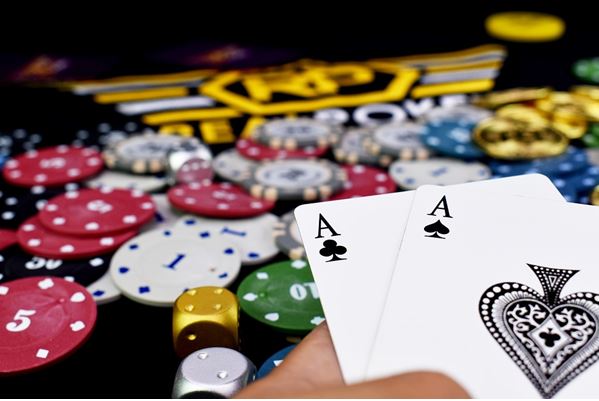When you think about it, it’s no surprise that millions of people play poker across the globe. It’s a diverse game that is played at a range of tempos, requires a varied skill set, and is suitable for card game beginners. Remembering how it felt to be a newbie myself, below I’ve outlined three essential pieces of advice for people who are completely new to poker, and want to get good at the game.
Recommended reading: What Games Can Poker Players Play to Improve their Skillset?
Begin by playing Texas hold’ em
Poker Hall of Famer Mike Sexton famously called Texas hold’em “the game that takes a minute to learn but a lifetime to master.” While Mike oversells just how quickly you can pick up the basics of Texas hold’em, he’s not wrong in suggesting that it’s the simplest poker game to learn.
There’s a wealth of free online material that will help you to learn the basics of Texas hold’em, from YouTube videos to helpful articles. Once you’ve sussed the basics, there are many different options for playing online Texas hold’em – PokerStars is my personal favorite.

Image credit: Pixabay
As Texas hold’em is the quickest version of poker to pick up (along with being the most popular), I’ve used it as an example throughout this article. Once you’ve mastered hold’em, some of the other great types of poker you can try out include:
- Omaha Hi
- Six-plus hold ’em
- Seven-card stud
- Pot limit Omaha
- 2-7 Triple Draw
Learn the hand strengths inside out
Whatever card game you’re playing, whether it’s blackjack, bridge, or poker, you need to start by learning the different hand values – it’s the foundation of how you play (when to enter a game and how to progress through it).
One of the reasons Texas hold’ em is so simple to learn is that the classic version of the game has just 10 different hand values for you to learn:
- High card: Highest individual value of your two cards – ace is highest, 2 the lowest
- Pair: Two cards of the same value
- Two pairs: Two instances of having two cards of the same value
- Three of a kind: Three cards of the same value
- Straight: A sequence of five cards – the lowest is ace to five, the best is 10 to ace
- Flush: Five cards that are of the same suit
- Full house: Three matching cards of one rank and two matching cards of another
- Four of a kind: Four cards of the same value
- Straight flush: Five cards of the same suit that are in sequence
- Royal flush: Sequence of five cards from 10 to ace (all of the same suit)
One of the key things to remember with the strength of your hands is that the ace is both low and high, depending on how you want to use it – if you’ve played games like blackjack, you’ll be familiar with the concept. However, unlike blackjack, where the ace has the value either of 1 or 11, the ace in hold’em is either one or the highest value card (there’s no 11).
It may seem complicated for beginners, but after a little practice you’ll see that there’s a logic to the hand values – for example, in Texas hold’em they’re based on making the best five card hand and are ranked on the odds of you getting each hand.
Understand the importance of bet sizing
Bet sizing plays a huge role in poker – it’s your opportunity to win the pot. By understanding how to size your bet correctly, you’ll get maximum value from your hands and put yourself in a position to bluff.
Continuing with the example of Texas hold’em, your understanding of bet sizing begins with the first bet you make. Depending on your position at the table, you may be obliged to post a bet as either the big or small blind. If you’re not posting a bet, then you need to be aware of what the size of your bet tells your opponent.
The two key things to know for beginners are:
Limping (paying the minimum to call the bet)
Generally speaking, the bet size convention in hold’em is to raise three times (3x) the big blind, plus one big blind for every limper in the pot. Limping almost always indicates to the other people at the table that you’re a weak player. This is because calling a bet says a couple of important things:
- You’re not confident in your hand but still want to play
- You’re a beginner who doesn’t understand bet sizing
Overbetting the pot
One general rule in poker is that you shouldn’t bet more than the pot; unless you are going all in. This is because it puts more of your stack at risk than is often necessary. While there are exceptions to this general rule, overbetting the pot usually tells your opponents:
- You have a strong hand that you’re trying to get value from, or
- You have a weak hand and are trying to buy the pot
Poker is one of the most diverse and fun card games that you can play – whether it’s online, with friends, or at a casino. While my strong recommendation is that you begin by playing Texas hold’em, there’s no reason you can’t pick another game. Whichever version of poker you start out with, make sure you memorize and understand the card values and master the bet sizing – these are the building blocks of your game!







Comments